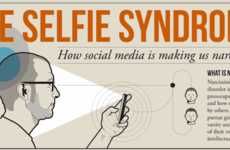
The Metlife Survey Looks at Why Teachers are Seeking Other Jobs
Sarah Nazim — June 18, 2012 — Social Good
References: metlife & awesome.good.is
The Metlife Survey of the American Teacher breaks down why US teachers are seeking other forms of employment due to low job satisfaction. The study reveals that only 44% are satisfied, which is the lowest statistic in the past two decades.
With the slumping and slow recovering economy, budget cuts have taken a toll on teacher salaries, which is a huge factor that contributes to the discontent. Budget cuts have also led to a diminished workforce as 66% have lost their jobs. While music and arts departments have also suffered, which in turn impacts the students as well, it is no wonder that 34% of educators feel that their industry is not secure.
Not only are budget cuts having an impact, but so is having to deal with students who are also suffering during these difficult times. This puts added pressure and stress on teachers. According to the Metlife Survey, 64% of students are without health and social support and a whopping 35% are malnourished and sent to school hungry.
With the slumping and slow recovering economy, budget cuts have taken a toll on teacher salaries, which is a huge factor that contributes to the discontent. Budget cuts have also led to a diminished workforce as 66% have lost their jobs. While music and arts departments have also suffered, which in turn impacts the students as well, it is no wonder that 34% of educators feel that their industry is not secure.
Not only are budget cuts having an impact, but so is having to deal with students who are also suffering during these difficult times. This puts added pressure and stress on teachers. According to the Metlife Survey, 64% of students are without health and social support and a whopping 35% are malnourished and sent to school hungry.
Trend Themes
1. Low Teacher Job Satisfaction - Opportunity for disruptive innovation: Develop new strategies and technologies to improve teacher job satisfaction and retention.
2. Diminished Workforce in Education - Opportunity for disruptive innovation: Create innovative solutions to address the shortage of teachers and staff in the education industry caused by budget cuts and job losses.
3. Student Well-being - Opportunity for disruptive innovation: Implement new programs and technologies to support students' health, social, and nutritional needs, improving their overall well-being.
Industry Implications
1. Education - Opportunity for disruptive innovation: Explore new approaches to address the challenges in the education industry, such as low job satisfaction and workforce shortages.
2. Technology - Opportunity for disruptive innovation: Develop innovative educational technologies that can enhance teacher student interactions and improve overall student well-being in the education sector.
3. Healthcare - Opportunity for disruptive innovation: Create integrated healthcare solutions that address the health and social support needs of students, contributing to their overall well-being and academic success.
2.2
Score
Popularity
Activity
Freshness























